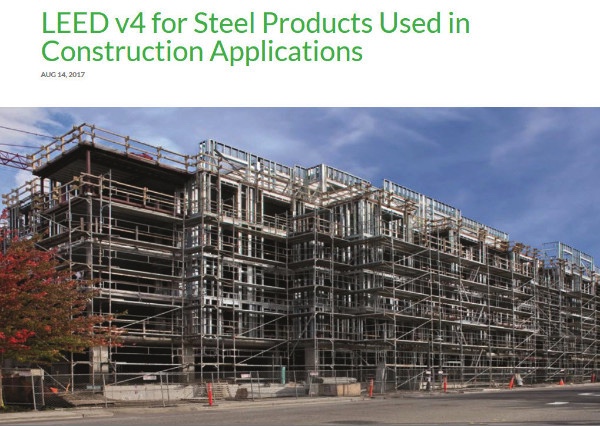LEED v4 for Steel Products Used in Construction Applications

Buildings consume one-third of all energy and two-thirds of all electricity generated, but steel construction products can help construction professionals and building owners reduce their energy footprint in a number of ways. While steel production is energy intensive, the North American steel industry has made significant progress in increasing the efficiency while lessening the environmental impact on the economy with many energy-management systems, ensuring efficient use and recovery of energy throughout the process. Steel construction products such as cool metal roofs, insulated sheet steel assemblies and insulated metal panels can help optimize energy performance and heating and cooling loads for buildings in all climate zones.
- With energy efficiency at the top of mind, steelmaking processes have been optimized for energy efficiency and sustainability, leading to a 31 percent reduction in energy intensity, and a 36 percent reduction in greenhouse gas emissions since 1990.
- Steel can be a critical factor in earning points in green building certifications such as LEEDv4. In this latest version of the LEED certification program, steel’s energy efficiency benefits can lead to points in the Energy and Atmosphere category by supporting builders’ efforts to meet the minimum energy performance prerequisite, optimizing energy performance credits and renewable energy production credits.
- A building’s roof can have the greatest impact on the energy usage. Steel roofing materials are available in a variety of finishes, colours, textures, and roofing profiles, with varying levels of reflectivity and emissivity to fit building needs and optimize heating and cooling loads in a wide range of regions and climates. Steel roofs also provide the optimal foundation for photovoltaic installations since the roof can be expected to last longer than the PC system it supports.
- Insulated sheet steel assemblies can be beneficial for energy costs across a wide variety of wall applications due to their ability to create tight building envelopes and reduce heat transfer. Insulated sheet steel wall assemblies help control migration of moisture from the warm interior through the wall assembly to the outside and reduce or eliminate uncontrolled infiltration and exfiltration of air and moisture, the primary causes of heat loss in an insulated assembly.
- Because of its dimensional stability, properly designed steel framing can contribute to an exceptionally tight building envelope, resulting in reduced air loss and better building energy performance over time.
